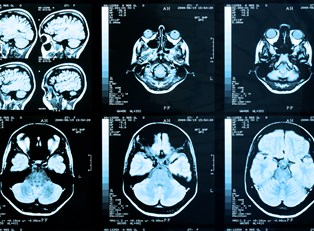When someone takes a blow to the head, the brain is literally rattled against the skull. This shaking is commonly referred to as a concussion. While the majority of concussions are only a temporary disturbance without any permanent damage, some can lead to related issues that can become quite serious if left untreated. Below are the necessary and proper steps to take to treat someone who has a concussion.
- Assess the Victim
Assess the victim’s wound and carefully examine them. Any external injuries you may noticeably see are not always the best indicator of the depth of an injury. While some minor scalp wounds may bleed quite profusely, some are less visible and can produce serious harm to the brain. If you notice the victim exhibiting two or more of the following symptoms, assume he or she has a concussion.
Physical Symptoms
- Loss of consciousness
- Sensitivity to light
- Blurred or double vision
- Seeing spots, "stars," or other unusual visual anomalies
- Poor hand-eye coordination
- Stumbling or loss of balance and coordination
- Vertigo
- Nausea or vomiting
- Weakness in the arms or legs
- Severe headache
- Tingling sensation
- Traumatic brain injury
Cognitive Symptoms
- Abnormal excitability or irritability
- Difficulty with concentration, memory, or logic
- Sudden outbursts of radical emotions
- Mood swings
- Lethargy
- Sleepiness
- Sadness or tearfulness
- General disinterest
- Immediately Contact a Doctor
Anyone suffering from a concussion or head injury needs an urgent evaluation by a trained medical professional. What may appear a simple head injury to you could actually be a fatal one. If the victim does not respond to you or isn’t regaining consciousness, quickly call an ambulance.
- Keep the Victim Still
At all costs, avoid moving the victim, because doing so could cause even more damage. Keep the victim calm and lay him or her down, offering a pillow to support his or her head if possible.
- Evaluate Consciousness
It is imperative to determine whether or not the victim is conscious and also how well he or she is functioning at a cognitive level. Use the AVPU Code to check the victim’s consciousness:
- A – Alert: Is the victim alert and responding to your questions?
- V – Voice: Is he or she responding to the sound of your voice? Continue to ask simple questions such as, "Do you know where you are?"
- P – Pain: Is the victim responding to your touch or pain? Gently pinch the skin to determine if there is any movement, or if he or she can open his or her eyes in response.
- U – Unresponsive: Can the victim respond to anything at all?
- Stay Focused
If the victim is conscious, continue asking him or her questions. This will serve two purposes: to keep the victim awake and to determine how badly he or she is actually hurt.
- Reduce and Monitor Temperature
Whether the victim is conscious or unconscious, keep the head cool using a damp cloth or ice pack, because it will help prevent swelling of the brain. However, do not apply any pressure to the victim’s head, as it may press bone splinters into the brain.
- Let the Victim Rest
If the victim wants to sleep, allow it, but wake him or her every 15 minutes for the initial two hours, once every 30 minutes for the following two hours, and then each hour. Every time you wake the victim, perform the AVPU test mentioned above. It may be irritating to the victim, but safety is the top priority.



